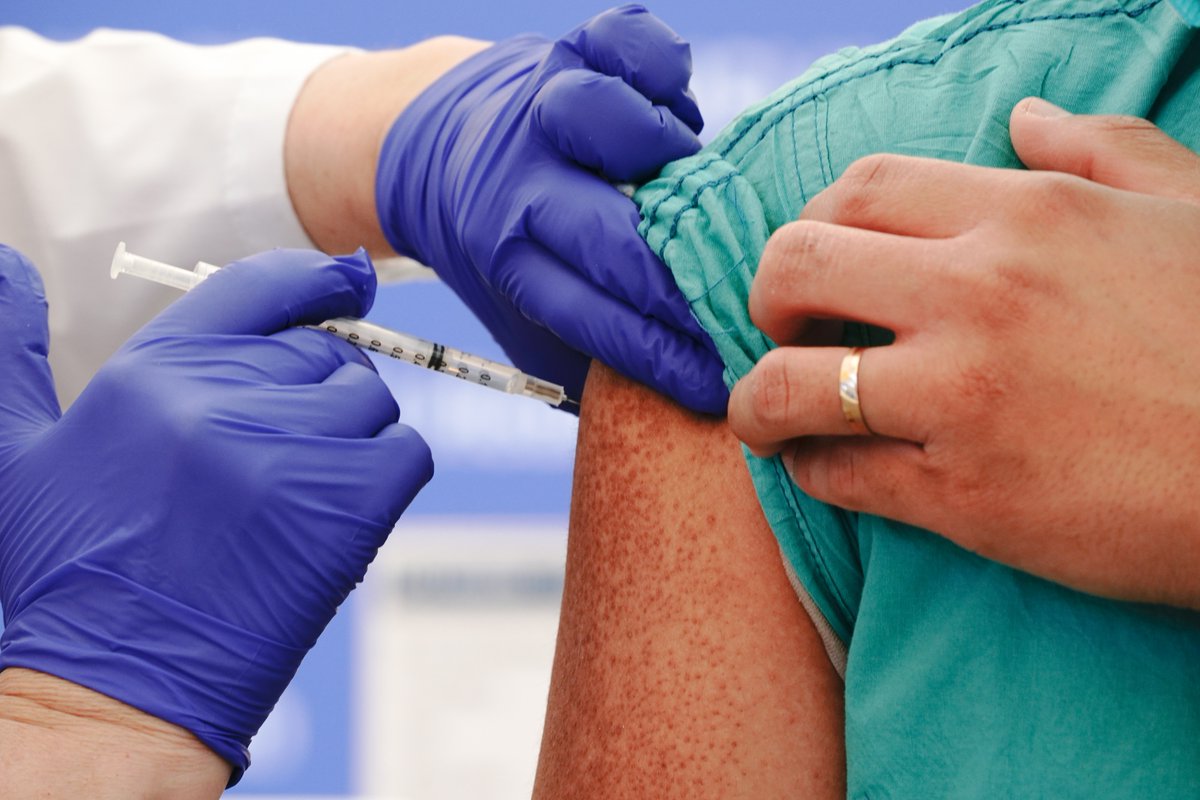
Mary Duenwald, a Bloomberg Opinion editor, tested positive for Covid-19 even after receiving both doses of the Pfizer vaccine.
How is that possible? trib.al/UWYi5In
How is that possible? trib.al/UWYi5In
“The reality is that so-called sterilizing immunity, or protection that completely blocks a virus from infecting you, is rare. In fact, only one vaccine has been proven to provide that, and that is the smallpox shot,” @SamFazeli8 told Duenwald trib.al/UWYi5In 

In trials, the Pfizer and Moderna vaccines were 95% effective. But some people developed symptoms after the second dose.
It’s also possible that Duenwald was infected with a new variant, which may have been better at getting past her antibody immunity trib.al/UWYi5In
It’s also possible that Duenwald was infected with a new variant, which may have been better at getting past her antibody immunity trib.al/UWYi5In

Yet her symptoms are mild, as if it were just a cold. Can she assume the shot is still protecting her?
Fazeli says of course, “you will never know how bad your symptoms would have been if you had not been vaccinated, but they could have been much worse" trib.al/UWYi5In
Fazeli says of course, “you will never know how bad your symptoms would have been if you had not been vaccinated, but they could have been much worse" trib.al/UWYi5In

The main purpose of vaccines is to keep people out of the hospital and lower their risk of dying.
Even vaccines with lower efficacy against mild and moderate disease, such as Johnson & Johnson’s shot, show better efficacy against severe illness trib.al/UWYi5In
Even vaccines with lower efficacy against mild and moderate disease, such as Johnson & Johnson’s shot, show better efficacy against severe illness trib.al/UWYi5In

Does being vaccinated mean Duenwald is less likely to transmit the virus to someone else?
Early data suggest that is the case, but we need to see the data on asymptomatic infections at six months and a year after the second dose to have a better idea trib.al/UWYi5In
Early data suggest that is the case, but we need to see the data on asymptomatic infections at six months and a year after the second dose to have a better idea trib.al/UWYi5In

So how safe should a vaccinated person feel?
Vaccinated people should feel safe until the data show otherwise. Currently, very few people are showing severe infections after being vaccinated, and that’s a good thing trib.al/UWYi5In
Vaccinated people should feel safe until the data show otherwise. Currently, very few people are showing severe infections after being vaccinated, and that’s a good thing trib.al/UWYi5In

What kind of measures do vaccinated people still need to take, especially around the unvaccinated?
As there are people out there who are not vaccinated, it is best to continue with masking and distancing — for their sake trib.al/UWYi5In
As there are people out there who are not vaccinated, it is best to continue with masking and distancing — for their sake trib.al/UWYi5In

• • •
Missing some Tweet in this thread? You can try to
force a refresh











